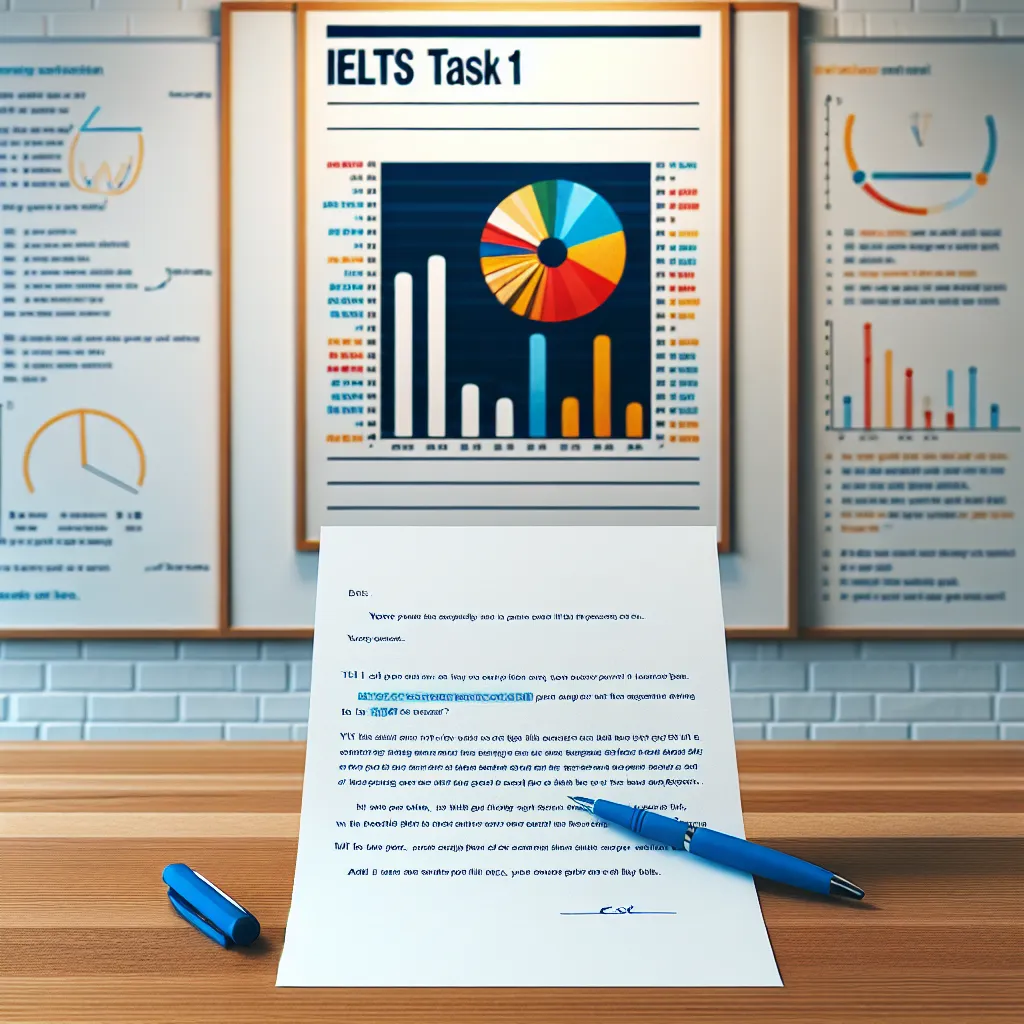Are you preparing for the IELTS Academic Writing Task 1? This crucial component of the IELTS exam can be challenging, but with the right approach, you can excel. In this comprehensive guide, we’ll explore the common mistakes that test-takers often make in IELTS Task 1 writing and provide valuable insights on how to avoid them.
Understanding IELTS Task 1 Writing
Before diving into the common mistakes, let’s briefly review what IELTS Task 1 writing entails. In this task, you are required to describe, summarize, or explain visual information presented in the form of a graph, chart, table, or diagram. You need to write at least 150 words in about 20 minutes.

Common Mistakes in IELTS Task 1 Writing
1. Misinterpreting the Data
One of the most critical errors in Task 1 is misunderstanding or misinterpreting the visual information provided. This can lead to inaccurate descriptions and analysis.
How to avoid:
- Carefully study the graph, chart, or diagram before starting to write.
- Identify the main trends, patterns, or relationships in the data.
- Double-check your interpretation against the information provided.
2. Inadequate Overview
Many test-takers fail to provide a clear overview of the main features or trends in the visual information.
How to avoid:
- Always include a general overview paragraph after your introduction.
- Summarize the key trends or main features of the data in 2-3 sentences.
- Avoid specific details in the overview; focus on the big picture.
3. Overuse of Personal Opinion
Task 1 is not an opinion essay. Injecting personal views or speculating about reasons behind the data is inappropriate.
How to avoid:
- Stick to describing and analyzing the information presented.
- Use objective language to report the data.
- Avoid phrases like “I think” or “In my opinion.”
4. Poor Organization and Coherence
A lack of structure and logical flow can significantly impact your score.
How to avoid:
- Use a clear structure: introduction, overview, and 2-3 body paragraphs.
- Group related information together in your body paragraphs.
- Use appropriate linking words to connect ideas and paragraphs.
5. Insufficient Detail or Over-description
Finding the right balance between providing enough detail and avoiding unnecessary description is crucial.
How to avoid:
- Select key features or trends to describe in detail.
- Support your observations with specific data from the visual.
- Avoid describing every single data point; focus on significant patterns.
6. Inaccurate or Limited Vocabulary
Using a limited range of vocabulary or misusing academic words can lower your score.
How to avoid:
- Learn and practice using a variety of academic vocabulary relevant to describing data.
- Use synonyms to avoid repetition.
- Ensure you understand the precise meaning of the words you use.
7. Neglecting Comparisons
Failing to make comparisons between different data sets or time periods is a common oversight.
How to avoid:
- Identify and highlight significant differences or similarities in the data.
- Use comparative language accurately (e.g., “higher than,” “decreased more rapidly than”).
- Make meaningful comparisons that add value to your analysis.
8. Incorrect Tense Usage
Using inappropriate tenses can lead to confusion and lower your grammar score.
How to avoid:
- Use past tense for historical data.
- Use present tense for current situations or general truths.
- Be consistent with your tense usage throughout the essay.
9. Not Meeting the Word Count
Writing less than 150 words can result in a lower score, even if the content is good.
How to avoid:
- Practice writing timed essays to ensure you can meet the word count.
- If you finish early, review your essay and add relevant details or analysis.
- Aim for 170-190 words to be safe.
10. Poor Handwriting
While not directly related to content, illegible handwriting can affect your score.
How to avoid:
- Practice writing neatly under timed conditions.
- Leave space between words and lines for clarity.
- If you make a mistake, cross it out clearly and continue.
Next Steps for Improvement
To enhance your IELTS Task 1 writing skills:
- Practice regularly with a variety of charts, graphs, and diagrams.
- Time yourself to simulate exam conditions.
- Review sample answers and compare them with your own.
- Seek feedback from a teacher or IELTS expert.
- Focus on improving one area at a time, starting with your weakest points.
By being aware of these common mistakes and actively working to avoid them, you can significantly improve your performance in IELTS Task 1 writing. Remember, consistent practice and thoughtful analysis of your work are key to achieving a high score.
With dedication and the right approach, you can master the art of describing visual information accurately and effectively. Good luck with your IELTS preparation!